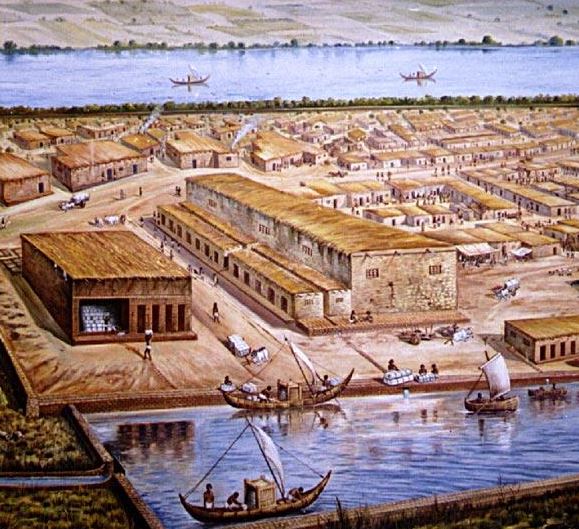Planning strategy-योजना रणनीति
Mixed Planning –
Co-existence of public & private sector till 1990 there was an emphasis on the public sector after that more on the private sector.
Comprehensive Planning –
Comprehensive planning is a process that determines community goals and aspirations in terms of community development.
The result is called a comprehensive plan and both express and regulates public policies on transportation, utilities, land use, recreation, and housing. Comprehensive plans typically encompass large geographical areas, a broad range of topics, and cover a long-term time horizon.
The term comprehensive planning is most often used by urban planners.
It consists of eight different steps.
Identifying issues, Stating goals, Collecting data, Preparing the plan, Creating implementation plans, Evaluating alternatives, Adopting a plan, Implementing and monitoring the plan.
Self Reliance –
It means not only to produce for the requirement of the country but to import whatever & whenever it’s needed.
|
Q-A “closed economy” is an economy in which (2011) (a.) the money supply is fully controlled (b.) deficit financing takes place (c.) only exports take place (d.) neither exports nor imports take place Solution (d) |
Balance Growth–
Not only to promote industries but also agriculture. Among industries to create a balance between medium industries, and small cottage industries.
|
Q- Economic growth is usually coupled with (IAS-2011) (a.) Deflation (b) Inflation (c.) Stagflation (d.) Hyperinflation Solution (b) |
Human development:-
Nowadays development is not measured by per capita income but it is measured qualitatively in which the factors like sanitation, housing. Gender equality, literacy are equally important. The concept is proposed by Mehboob-ul-Haq and Indian economist Amartya Sen .
UNDP accepted it according to
1-Life expectancy at birth.
2-Knowledge, education enrolment ratio.
3-Standard of living GDP per capita income, purchasing power.
Imperative Planning –
In India planning is associated with implementation hence it is known as imperative planning.
Imperative and indicative planning- (IAS-Exam)
In the case of imperative planning, all economic activities belong to the public sector, while in the other type, they belong to the private sector
From Q.P.L. to L.P.G.-Liberalization –
To remove the procedure bottleneck to achieve a free flow economy.
Privatization – To reduce the role of the state in the economy & to replace it by the market or private sector.
Globalization – To remove the role of the state of import-export in such a way that the country's economy joins with the economy of the world. The foreign companies can easily come in country & Vice-Versa.
Inclusive growth –
UNDP has defined inclusive growth as
“the process and the outcome where all groups of people have participated in growth and have benefited equitably from it”.
11th Five year plan had introduced the concept of inclusive growth .
This implies that inclusive growth should include all sections as beneficiaries as well as partners in growth and that inclusion of the excluded should be embodied in the growth process.
This growth reduces disparities among per capita incomes in agriculture and non-agriculture, in rural and urban areas, and in different socio-economic groups, particularly between men and women and among different ethnic groups.
The result of inclusive growth is reduction in vertical inequalities (individual inequalities) and horizontal inequalities (group inequalities).
Intergenerational Equity & Issues-Inclusive Growth
This Equity is more profound between the developed & developing nations or between the Global North and the Global South.
Intergenerational equity is the development of resources by one generation to enhance economic sustainability for the future generation.
In this context, the concept of sustainable development has been introduced, which refers to the use of resources should be done in such a manner that those resources shall also be available to meet the future needs.
Intra-generational Equity & Issues
The concept of intra-generational equity provides rights and duties to every person of a single generation to use and take care of the resources moderately among the members of the generation.
In order to promote the intra-generational equity, the concept of social justice is propagated.
Welfare schemes like subsidies, reservations, etc., are provided by the governments to help the vulnerable section of society.
However, sometimes measures taken under the narrative of social justice interfere with the free market principle.
The free market demands rollback of state and propagates market as the solution of every problem.
Challenges for Inclusive Growth
No task is easy in its first steps. There are many challenges to achieving the goal of Inclusive Growth in a country. These challenges include the
- Poverty – Although several steps have been taken by the government of India, more than 300 million Indians suffer from poverty.
- Unemployment – It is one of the major challenges for Inclusive Growth. Due to the lack of skills and education, employment is still a serious problem.
- Agriculture Backwardness – The agricultural field is not flourishing the way it should be due to declining soil degradation, climate change, and scarcity of water.
- Regional disparities – The cast system and regional disparities contribute to the wealth gap and are key contributors to regional disparities. It is another challenge for Inclusive Growth.
|
Q- Inclusive growth as enunciated in the Eleventh-Five Year Plan does not include one of the following (IAS -2011) (a) Reduction of poverty (b) Extension of employment opportunities (c) Strengthening of capital market (d) Reduction of gender inequality Ans- (c) Q- It is argued that the strategy of inclusive growth is intended to meet the objectives of inclusiveness and sustainability together. Comment on this statement. (Answer in 250 words) (IAS Mains 2019) Q-What are the salient features of ‘inclusive growth’? Has India been experiencing such a growth process? Analyze and suggest measures for inclusive growth(IAS Mains 2017) Q-Comment on the challenges for inclusive growth which include careless and useless manpower in the Indian context. Suggest measures to be taken for facing these challenges. (IAS Mains 2016) Q-Explain intergenerational and intragenerational issues of equity from the perspective of inclusive growth and sustainable growth. (Answer in 150 words) (IAS Mains-2020) Q-Which of the following can aid in furthering the Government’s objective of inclusive growth? (2011) 1. Promoting Self-Help Groups 2-Promoting Micro, Small and Medium Enterprises 3-Implementing the Right to Education Act Select the correct answer using the codes given below: (a.) 1 only (b.) 1 and 2 only (c.) 2 and 3 only (d.) 1, 2 and 3 Solution (d) |




.jpg)
.jpg)
.jpg)
.jpg)
.jpg)
.jpg)




